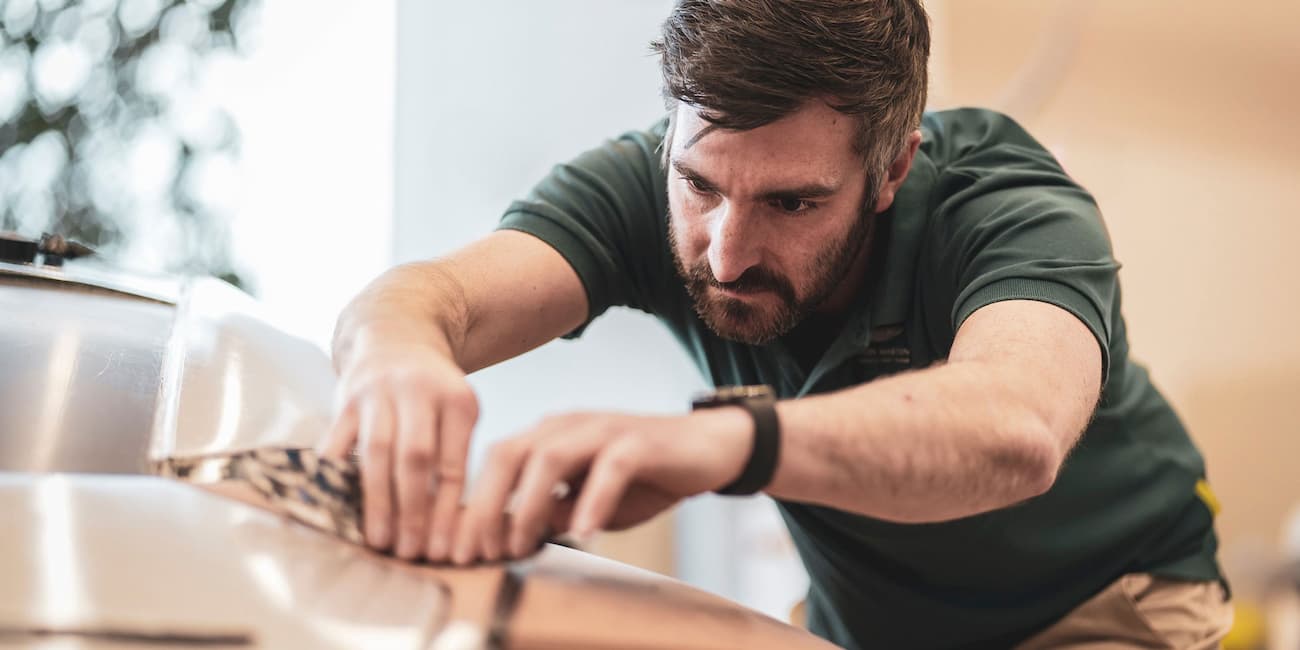We interview Harry Burgess of Aston Martin’s design team to learn first hand the ins and outs of clay modeling and why it’s more relevant to automotive design than ever.
In this day and age of high technology and robotics in the automotive space, it’s hard to imagine how a manual artform can not only survive, but thrive. But clay modeling, the art of rendering a car in in a scaled form by artisans using malleable clay, is indeed that industrial discipline still considered the premier technological way to develop a car. Every car you’ve ever seen started off its life as a clay model and even with the introduction of VR and 3D CAD programmes, that’s still the case. “As much as you can do on a screen digitally, mathematically it's still in essence a 2D image. So at some point in the process very early on, we need the 3D image that we can see, we can touch. We can evaluate proportion. It's very difficult to evaluate proportions of a car on a screen. And the thing is, with a 3D model, you can't lie. There's no cheating. It is what it is,” explained Lucid Technologies Clay modeling manager, Robert Fallon to Business Insider. From its earliest origins in the 1930s, when General Motors head of the styling studio Harley Earl introduced the idea of using a clay model to create better aerodynamic analytics for a fraction of a price as steel prototypes (though modern models can cost hundreds of thousands of dollars), clay models have been evolving (CNC robotics mill a clay model overnight in what used to take weeks). And the profession is advancing as one of the most sought after skills in the automotive space as expertises like CAD as well as the artisanship of shaping clay to exact specifications are requirements. Clay modelers are often freelancers, going from project to project and working for various manufacturers, charging sums equivalent to skill. In essence, they’re the rock and roll stars of the automotive manufacturing world, living a life of freedom, creative joy and fascinating skills.
Harry Burgess, Lead Design Clay Modeller for Aston Martin Lagonda Ltd, is one of the premier clay modelers in the market. With a sunny demeanor and a broad experience from disruptive brands like Ariel to global marque brands like Mercedes-Benz, Burgess explained the fascinating world of clay modeling and the changes its undergoing.
Stringo: How did you get started with a clay modeler career path?
Harry Burgess: I've always been into cars and my dad was always big on cars and I of blame him for getting me into cars (laughs). I've started to kind of focus my career on getting into car design; but in the beginning of my education I didn't know how to do that. But all my studies focussed on what I needed to do to get into one of the (automotive design) universities and I was lucky enough to get an interview and landed on one, Coventry University.
Stringo: But why clay? Surely it would have been easier to learn digital design.
HB: I always had a soft spot for using my hands. It goes back to me messing around as a kid with my dad in the garage, making stuff. I've always wanted to keep up with technology like CAD, but I'd say drawing in clay modeling was always my favourite.
Stringo: So what was your first gig in automotive design?
HB: One of my projects, my final year project was for Vanwall. It's still on the shelf in the kitchen over there. It was like a new electric concept for bringing an old British Formula One team car back in the 50s to life.
Stringo: And from then on, you were off to the races. Did anyone mentor you along the way?
HB: There was a chap that was actually very experienced, he'd been around the world telling me all the stories of of clay modeling, how he worked in Sweden and he his work in America. I would say of the guys I still know that he's like one of the originals. He told me, “this is so much more fun than designing, get into clay modeling.”
Stringo: Can you explain why is it quicker to iterate in clay? You know design, you’ve got a piece of clay. You got a computer here. Isn’t it faster to be able to get that digitally and change it?
HB: You still need to go up to it and see it touch it. Feel its proportions; a vehicle inside the studio compared to outside looks completely different. It’s like getting the perspective of a tree in the background or a fence or another car. VR and 3D are really advanced now, no doubt about it. There's a balance, and they both work just as well.
Stringo: What would be your advice to the up and coming clay modelers, the young ones entering the field?
HB: No one can preempt what the future is going to offer, but go with what you enjoy and if you enjoy clay modeling like I do. Keep going and push push push. And also keep another string to the bow.
Stringo: I’m glad you know and have used Stringos, that was a bonus.
HB: I think Stringos work perfectly, actually. It's kind of the work tool that is needed kind of everyday, but it's sometimes subtly in the corner at the design studio. You realize it's needed all the time.





